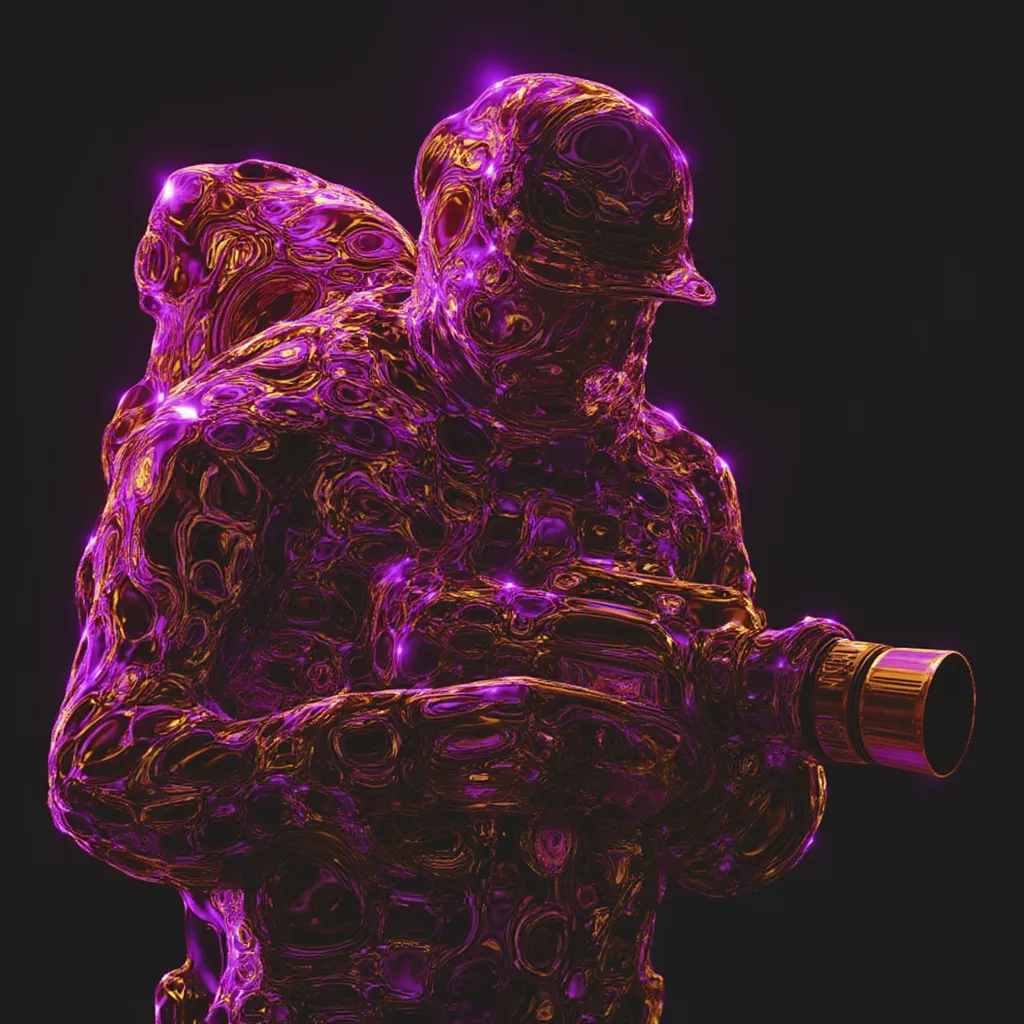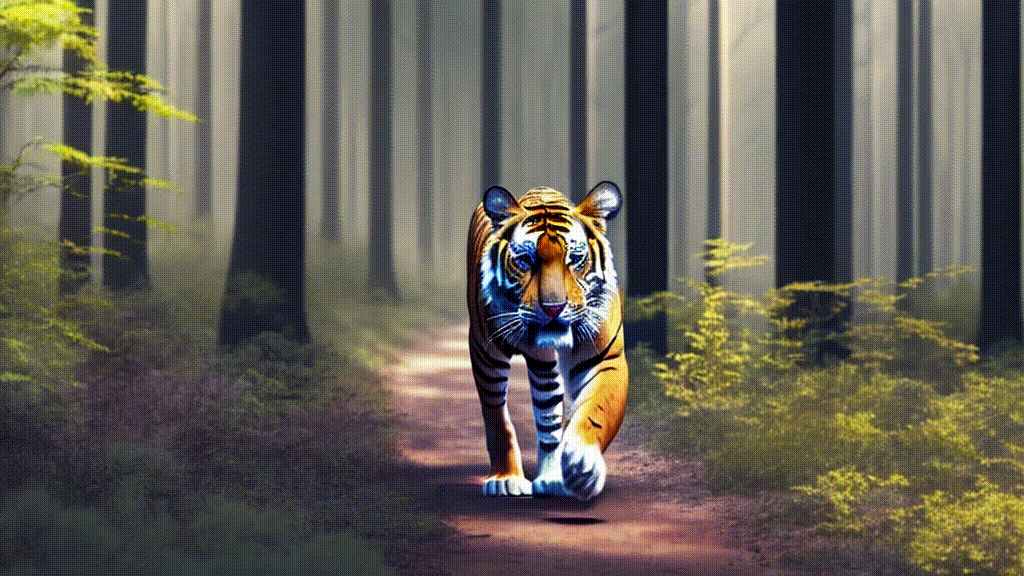cogvideox-5b
Maintainer: cuuupid

1

| Property | Value |
|---|---|
| Run this model | Run on Replicate |
| API spec | View on Replicate |
| Github link | View on Github |
| Paper link | View on Arxiv |
Create account to get full access
Model overview
cogvideox-5b is a powerful AI model developed by cuuupid that can generate high-quality videos from a text prompt. It is similar to other text-to-video models like video-crafter, cogvideo, and damo-text-to-video, but with its own unique capabilities and approach.
Model inputs and outputs
cogvideox-5b takes in a text prompt, guidance scale, number of output videos, and a seed for reproducibility. It then generates one or more high-quality videos based on the input prompt. The outputs are video files that can be downloaded and used for a variety of purposes.
Inputs
- Prompt: The text prompt that describes the video you want to generate
- Guidance: The scale for classifier-free guidance, which can improve adherence to the prompt
- Num Outputs: The number of output videos to generate
- Seed: A seed value for reproducibility
Outputs
- Video files: The generated videos based on the input prompt
Capabilities
cogvideox-5b is capable of generating a wide range of high-quality videos from text prompts. It can create videos with realistic scenes, characters, and animations that closely match the provided prompt. The model leverages advanced techniques in text-to-video generation to produce visually striking and compelling output.
What can I use it for?
You can use cogvideox-5b to create videos for a variety of purposes, such as:
- Generating promotional or marketing videos for your business
- Creating educational or explainer videos
- Producing narrative or cinematic videos for films or animations
- Generating concept videos for product development or design
Things to try
Some ideas for things to try with cogvideox-5b include:
- Experimenting with different prompts to see the range of videos the model can generate
- Trying out different guidance scale and step settings to find the optimal balance of quality and consistency
- Generating multiple output videos from the same prompt to see the variations in the results
- Combining
cogvideox-5bwith other AI models or tools for more complex video production workflows
This summary was produced with help from an AI and may contain inaccuracies - check out the links to read the original source documents!
Related Models

video-crafter

16
video-crafter is an open diffusion model for high-quality video generation developed by lucataco. It is similar to other diffusion-based text-to-image models like stable-diffusion but with the added capability of generating videos from text prompts. video-crafter can produce cinematic videos with dynamic scenes and movement, such as an astronaut running away from a dust storm on the moon. Model inputs and outputs video-crafter takes in a text prompt that describes the desired video and outputs a GIF file containing the generated video. The model allows users to customize various parameters like the frame rate, video dimensions, and number of steps in the diffusion process. Inputs Prompt**: The text description of the video to generate Fps**: The frames per second of the output video Seed**: The random seed to use for generation (leave blank to randomize) Steps**: The number of steps to take in the video generation process Width**: The width of the output video Height**: The height of the output video Outputs Output**: A GIF file containing the generated video Capabilities video-crafter is capable of generating highly realistic and dynamic videos from text prompts. It can produce a wide range of scenes and scenarios, from fantastical to everyday, with impressive visual quality and smooth movement. The model's versatility is evident in its ability to create videos across diverse genres, from cinematic sci-fi to slice-of-life vignettes. What can I use it for? video-crafter could be useful for a variety of applications, such as creating visual assets for films, games, or marketing campaigns. Its ability to generate unique video content from simple text prompts makes it a powerful tool for content creators and animators. Additionally, the model could be leveraged for educational or research purposes, allowing users to explore the intersection of language, visuals, and motion. Things to try One interesting aspect of video-crafter is its capacity to capture dynamic, cinematic scenes. Users could experiment with prompts that evoke a sense of movement, action, or emotional resonance, such as "a lone explorer navigating a lush, alien landscape" or "a family gathered around a crackling fireplace on a snowy evening." The model's versatility also lends itself to more abstract or surreal prompts, allowing users to push the boundaries of what is possible in the realm of generative video.
Updated Invalid Date

cogvideo

32
cogvideo is a text-to-video generation model developed by the team at NightmareAI. It is capable of generating short video clips from text prompts, similar to models like damo-text-to-video and stable-diffusion. The model uses a multi-stage approach, first generating an initial video from the text prompt and then refining it through a second stage. Model inputs and outputs The cogvideo model takes in a text prompt, an optional seed value, and some additional settings to control the generation process. The outputs are a series of video frames that can be combined into a short video clip. Inputs Prompt**: The text prompt that describes the desired video content Seed**: An optional integer value to control the random generation process (-1 to use a random seed) Translate**: A boolean setting to automatically translate the prompt from English to Simplified Chinese Both Stages**: A boolean setting to run both stages of the generation process (for faster results, you can uncheck this to only run the initial stage) Image Prompt**: An optional starting image to guide the video generation Use Guidance**: A boolean setting to enable stage 1 guidance (recommended for better results) Outputs A series of video frames that can be combined into a short video clip Capabilities The cogvideo model can generate a variety of video content from text prompts, ranging from simple animations to more complex scenes with moving objects and characters. The model is particularly adept at generating videos with a surreal or dreamlike quality, drawing inspiration from the prompts in creative and unexpected ways. What can I use it for? The cogvideo model could be used for a wide range of applications, such as creating short video clips for social media, generating concept art for films or games, or even prototyping new ideas and visualizing them in a dynamic format. The ability to translate prompts to different languages also opens up possibilities for creating content for global audiences. Things to try To get the most out of the cogvideo model, experiment with different types of prompts, from the specific and descriptive to the more abstract and imaginative. Try playing with the various input settings, such as the seed value and the use of image prompts, to see how they affect the generated output. You can also explore the model's capabilities by combining it with other tools, such as video editing software, to create more polished and refined video content.
Updated Invalid Date

videocrafter

29
VideoCrafter is an open-source video generation and editing toolbox created by cjwbw, known for developing models like voicecraft, animagine-xl-3.1, video-retalking, and tokenflow. The latest version, VideoCrafter2, overcomes data limitations to generate high-quality videos from text or images. Model inputs and outputs VideoCrafter2 allows users to generate videos from text prompts or input images. The model takes in a text prompt, a seed value, denoising steps, and guidance scale as inputs, and outputs a video file. Inputs Prompt**: A text description of the video to be generated. Seed**: A random seed value to control the output video generation. Ddim Steps**: The number of denoising steps in the diffusion process. Unconditional Guidance Scale**: The classifier-free guidance scale, which controls the balance between the text prompt and unconditional generation. Outputs Video File**: A generated video file that corresponds to the provided text prompt or input image. Capabilities VideoCrafter2 can generate a wide variety of high-quality videos from text prompts, including scenes with people, animals, and abstract concepts. The model also supports image-to-video generation, allowing users to create dynamic videos from static images. What can I use it for? VideoCrafter2 can be used for various creative and practical applications, such as generating promotional videos, creating animated content, and augmenting video production workflows. The model's ability to generate videos from text or images can be especially useful for content creators, marketers, and storytellers who want to bring their ideas to life in a visually engaging way. Things to try Experiment with different text prompts to see the diverse range of videos VideoCrafter2 can generate. Try combining different concepts, styles, and settings to push the boundaries of what the model can create. You can also explore the image-to-video capabilities by providing various input images and observing how the model translates them into dynamic videos.
Updated Invalid Date

sdxl-lightning-4step

453.2K
sdxl-lightning-4step is a fast text-to-image model developed by ByteDance that can generate high-quality images in just 4 steps. It is similar to other fast diffusion models like AnimateDiff-Lightning and Instant-ID MultiControlNet, which also aim to speed up the image generation process. Unlike the original Stable Diffusion model, these fast models sacrifice some flexibility and control to achieve faster generation times. Model inputs and outputs The sdxl-lightning-4step model takes in a text prompt and various parameters to control the output image, such as the width, height, number of images, and guidance scale. The model can output up to 4 images at a time, with a recommended image size of 1024x1024 or 1280x1280 pixels. Inputs Prompt**: The text prompt describing the desired image Negative prompt**: A prompt that describes what the model should not generate Width**: The width of the output image Height**: The height of the output image Num outputs**: The number of images to generate (up to 4) Scheduler**: The algorithm used to sample the latent space Guidance scale**: The scale for classifier-free guidance, which controls the trade-off between fidelity to the prompt and sample diversity Num inference steps**: The number of denoising steps, with 4 recommended for best results Seed**: A random seed to control the output image Outputs Image(s)**: One or more images generated based on the input prompt and parameters Capabilities The sdxl-lightning-4step model is capable of generating a wide variety of images based on text prompts, from realistic scenes to imaginative and creative compositions. The model's 4-step generation process allows it to produce high-quality results quickly, making it suitable for applications that require fast image generation. What can I use it for? The sdxl-lightning-4step model could be useful for applications that need to generate images in real-time, such as video game asset generation, interactive storytelling, or augmented reality experiences. Businesses could also use the model to quickly generate product visualization, marketing imagery, or custom artwork based on client prompts. Creatives may find the model helpful for ideation, concept development, or rapid prototyping. Things to try One interesting thing to try with the sdxl-lightning-4step model is to experiment with the guidance scale parameter. By adjusting the guidance scale, you can control the balance between fidelity to the prompt and diversity of the output. Lower guidance scales may result in more unexpected and imaginative images, while higher scales will produce outputs that are closer to the specified prompt.
Updated Invalid Date